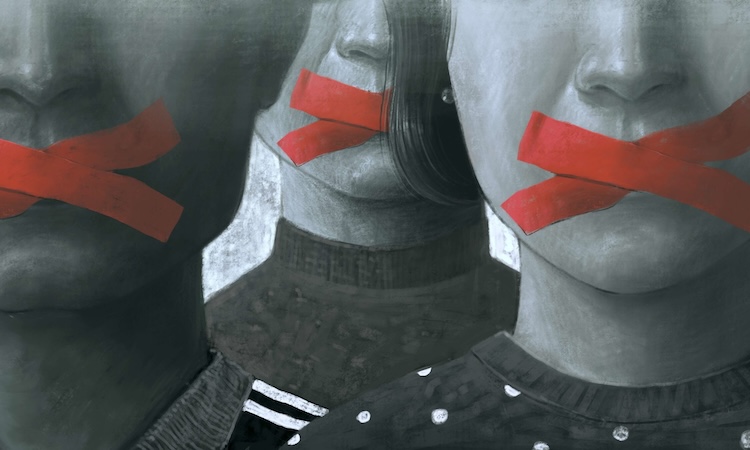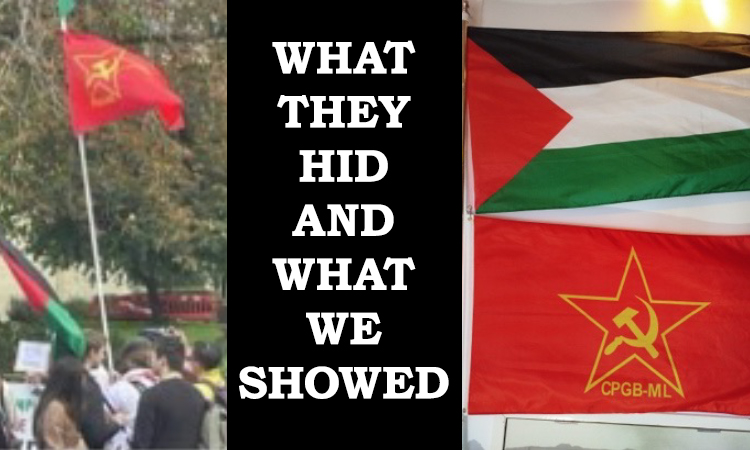The Rage Against Capitalism that started in Tottenham and then spread to cities all over England, as well as to Cardiff, has been sparked off by the economic crisis of capitalism – a crisis that has led to vicious capitalist attacks on the already badly deteriorating conditions of existence of the broad masses of the working class.
To give some examples of what the working class has been enduring over the last few months: unemployment has been rising inexorably; wages that were already low have been frozen while hundreds of pounds have been added to every family’s grocery and fuel bills; benefits such as the Education Maintenance Allowance have been withdrawn; there has been a sharp reduction in facilities for the disabled and elderly – which were already feeble; and a major assault has been launched on those receiving disability benefit, with thousands of people assessed ‘fit to work’, even though they would have no chance of competing for a job against an able-bodied person, and then losing £70 a week from their already meagre incomes.
When public spending cuts were first promoted as the ‘answer’ to the crisis, there was no shortage of warnings from such as the Police Federation that the cuts risked giving rise to social unrest – and now they have done. The same indignation that in 1990 caused the British proletariat to rebel and defy Margaret Thatcher’s iniquitous poll tax law has re-emerged with a vengeance. Now that the bourgeoisie is looking to snatch much more from the working class in a vain attempt to extricate itself from the worst ever crisis of the capitalist system, once again the people are fighting back.
Despite the politicians’ assertions to the contrary, the bourgeois state has been preparing to hit back for some time. Hence the steady increase in police powers and repressive measures over the last 20 years.
There is little doubt that if the protests continue we shall soon see water cannon, tear gas, rubber bullets and the army deployed in the streets of British cities, as well as the armoured vehicles that have already been deployed. Meanwhile, the courts are imposing ultra-draconian sentences on those demonstrators the police catch (whether guilty or not). Even before being found guilty, one teenager’s mother has been served an eviction notice and told she will lose her council flat as a consequence of her son’s taking part in the uprising. And the reintroduction of capital punishment is once again seriously being mooted.
However, if it were to be faced by a united working-class movement, the bourgeoisie, who number only a few thousand billionaires and their favourites, knows that it could not survive. Hence the urgent need to divide the masses of the people in addition to intimidating them.
Apart from straightforward bribery, the techniques for keeping sections of the masses on the side of the bourgeoisie include spreading false hopes that the bourgeoisie can be made to ‘see reason’; laughing off the whole idea of spreading consciousness of the need for proletarian revolution as ‘utopian’, ‘impractical’, and even ‘divisive’; emphasising the damage that working-class people suffer as a result of resisting the bourgeoisie, and blaming that damage on the resistance; tiring people out with useless activity such as lobbying parliament, preparing Early Day Motions, petitioning their local MPs, etc … and so on and so forth.
All those who are organising to support the uprising of the youth and in support of their demands for social justice; all those who sympathise with working-class people expressing their rage in the only way they presently can are now finding themselves bombarded by such bourgeois ploys being once again rushed into the working-class movement by various opportunist elements. It is most important that the working class learns to see through these divisive tactics and to thoroughly expose those ‘activists’ in the working-class movement whose one interest is to defuse the fight-back against capitalism as fast as possible.
These reactionary elements are likewise concerned to ensure nothing is done to help militant young people understand that it is the capitalist system which is the enemy against which their rage must be directed.
They do not want alienated and disenfranchised youngsters to understand that their needs will never be seriously addressed as long as capitalism is in place and has not been replaced by a socialist planned economy, for this will lead to the understanding that there is a need to move on from their present spontaneous venting of anger and frustration to an infinitely more effective targeted fight-back consciously aimed at overthrowing capitalism altogether, dispossessing the bourgeoisie, installing the proletariat in power and organising the deployment of all our national resources for the purpose of meeting people’s needs to the maximum possible extent, providing everybody not only with employment and the chance (and obligation) to earn a decent living, but also attending to their cultural and spiritual needs.
Clearly all this demands a very high level of preparation and organisation, which is only feasible through the medium of a united communist party well versed in the art and science of revolution and purged of the opportunist and class-collaborationist elements who abound in the working-class movement. Once this understanding spreads in the disaffected working class, the writing is on the wall for capitalism – and not before time!
United behind such a party, the working class will be truly invincible. It is not for nothing that the agents of the bourgeoisie in the working-class movement are busting a gut to try to make sure that this never happens.
One of the tactics being heavily promoted by the police, the media, and those desirous of paralysing the working-class movement, is to try to turn the ethnic communities with strong shopkeeping connections, such as the Indians and the Turks in London, against the popular revolt.
Although the rebellious youth have overwhelmingly attacked the retail outlets of heartless multinationals, and have focused on town centres dominated by these, such as Croydon, Ealing and Enfield Town, the media have put all the emphasis on the relatively few owner-occupied businesses that have been attacked, giving the false impression that it is attacks on small businesses that are the norm.
The police then concentrate all their forces on protecting the areas where the retail outlets of the multinationals are established, in the expectation that the youth will attack the small businesses that have been left unprotected. This was very much the case, for instance, in Ealing.
On top of that, the police are going around areas that are unlikely targets (because there is scarcely a multinational to be seen), forcing small shopkeepers to close their businesses, thereby causing them considerable loss of income as well as inconvenience to their customers. It is more than likely also that provocateurs have been placed among the protesters with instructions to direct assaults towards small shopkeepers.
This tactic of the bourgeoisie is very clever because communities such as those of the Turks and Indians tend to be more progressive and sympathetic towards the oppressed, such as those who make up the vast majority of the protesters. By ensuring that it is small shopkeepers, rather than the multinationals, who appear to be under attack, the capitalists are able to turn many in these communities against the uprising and thus weaken the struggle.
Naturally all these tactics are accompanied by a media blitz that castigates the young rebels as criminals, scroungers, morons, etc.
Much is made of the hardships of shopkeepers and innocent homeowners by those who only work in the working-class movement with a view to demoralising it. Instead of looking for ways of ensuring that the protest movement understands that small shopkeepers are not enemies, they want to channel the protestors into ‘legitimate’ (harmless and largely useless) forms of protest, such as lobbying MPs, demonstrating outside parliament, and the like. In this way, not only are they seeking to defuse the protesters’ rage but at the same time they are peddling illusions that MPs might be sympathetic to the cause of the working class, and that they would be not only willing but also able to change the bourgeois policy of shoving the burden of the crisis onto the backs of the working class.
There are also those who take advantage of the fact that the spontaneity of the protest precludes it having any defined aim to try to foist on it aims that could only result in disarming the movement. Particularly obnoxious are suggestions that the movement should focus on demanding only a few reforms within the system (such as police reforms and accountability of the police) – never raising its gaze beyond that and never even thinking of life beyond the bounds of capitalism.
Were it not for the reality of the present economic situation, demands for police reform might pass muster. However, in real-world 2011 the British ruling capitalist class has its back against the wall, and since it has limited scope in its straitened economic circumstances for offering any meaningful concessions, it will be relying heavily on all the instruments of state repression – police, army, courts, prison service – to help it hold down working-class dissent by force.
When 30 years ago the working class last rose up in violent resistance and on a substantial scale to police brutality and racism, mass unemployment and penury, the world crisis of capitalism had not reached the same degree of acuteness that is has reached today. British imperialism had not depleted its resources through long years of predatory wars against Yugoslavia, Iraq, Afghanistan and now Libya. China had not appeared on the scene in Africa and South America, depriving western imperialism to a significant extent of its scope for looting the economies of the countries there.
Today British imperialism has rather less loose change to distribute, and the plight of the working class is also significantly worse. Thirty years ago, brutal suppression of the uprisings went hand in hand with practical concessions such as the setting up of government-financed bodies whose apparent aim was to combat racism, but which actually worked to pacify the rebellious youth. Some of these bodies in subsequent years did a modicum of anti-racist work, in the process giving many people the impression that racism is something that capitalism can live without. But racism is a vital tool in dividing the working class, and as economic crisis bites deeper, racist scapegoating and the pitting of communities against each other will only get worse.
In the present crisis, then, there can be little doubt that the bourgeoisie will focus almost exclusively on repression, with the police being one of its most important instruments. All talk of making the police cosy, answerable to the public, non-racist, or anxious to ‘serve communities’, however well-intentioned, ends up just covering up what is really going on.
Far from fostering hopes of turning the police into kind gentlemen, the working-class movement must prepare its constituency for the aggravation of police violence and for the fight-back which, through several intermediary links, must traverse along the road that leads to socialism.
YOUTH UPRISING SUPPLEMENT August 2011:
Revolt is an example to emulate















